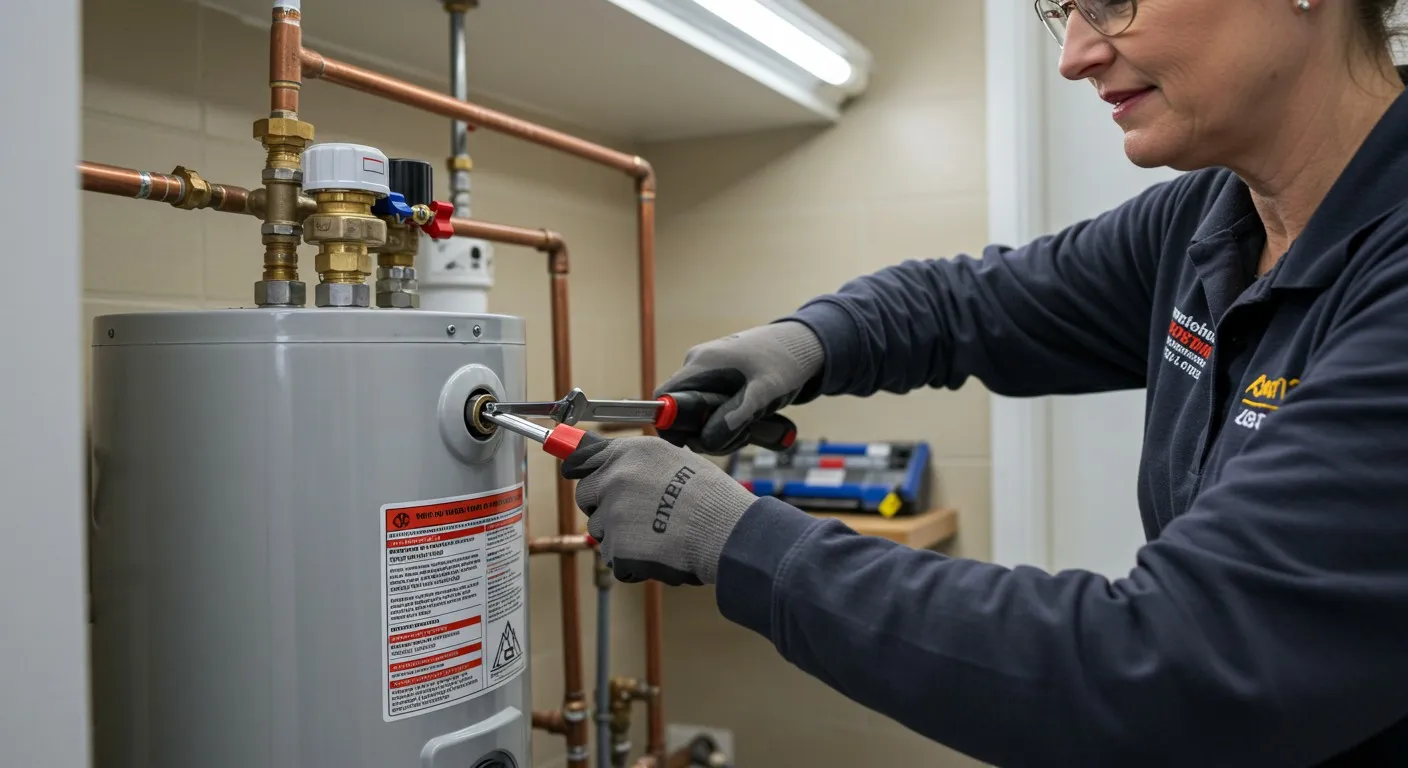Water Heater Repair in Mt Lebanon, PA

Reliable Diagnostics for Common Water Heater Problems
A thorough diagnostic process serves as the foundation of lasting repairs. Technicians begin with a visual inspection of the tank, connections, and surrounding area to identify signs of corrosion, leaks, or loose fittings. Gas units undergo burner and pilot-light examinations, while electric models receive element resistance and thermostat performance checks. Each diagnostic step pinpoints the root cause, ensuring only necessary components are serviced or replaced.

Common Failure Symptoms
- No Hot Water: An interruption in heating elements, a tripped circuit breaker, or a malfunctioning gas control valve can leave a household without hot water.
- Fluctuating or Inconsistent Temperatures: Faulty thermostats, sediment buildup around heating elements, or scaling on heat exchangers often lead to temperature swings.
- Leaks Around Tank, Valves, or Seals: Corroded tank walls, failing pressure-relief valves, or degraded gaskets and fittings may allow water to escape, risking water damage.
- Rumbling, Popping, or Hissing Noises: Accumulated sediment at the bottom of the tank can trap pockets of steam, causing disruptive noises and reduced heating efficiency.
- Pilot Light or Ignition Failures: Gas units with a weak pilot flame, clogged burner ports, or defective thermocouples fail to ignite or stay lit, cutting off hot-water production.
Comprehensive Diagnostic Process
- Initial Assessment: A visual walkthrough of the installation area checks for leaks, corrosion, or improper venting.
- Supply Verification: Gas-fired systems receive gas-supply pressure testing; electric models have voltage and continuity tests on heating elements.
- Component Performance Checks: Thermostat calibration, temperature-pressure valve inspection, and burner-assembly flow are measured against manufacturer specifications.
- System Safety and Efficiency Review: Venting pathways, flue integrity, and combustion-air provisions are evaluated to ensure safe operation and adherence to local codes.
Expert Repair Solutions
Heating element replacement, valve servicing, and sediment removal are common repair tasks tailored to each water heater type—whether conventional tank, tankless, or hybrid model. Typical repair solutions include:
- Element and Thermostat Replacement: Worn heating elements and faulty thermostats cause poor temperature control; precise part swaps restore accurate heating cycles.
- Pressure-Relief Valve and Gasket Repair: A malfunctioning relief valve or deteriorated gasket can lead to leaks; installing OEM-grade valves and seals prevents future drips.
- Sediment Flushing and Tank Cleaning: Routine flushing removes scale and sediment, improving heat transfer efficiency and reducing noise.
- Pilot-Light and Ignition System Servicing: Cleaning or replacing pilot-light assemblies, thermocouples, or ignition modules ensures reliable ignition on gas units.
- Venting and Combustion Safety Corrections: Repairs to vent pipes, draft inducers, and air inlets eliminate carbon-monoxide risks and maintain proper draft characteristics.
Repair vs. Replacement Considerations
Determining whether to repair an existing unit or invest in a new water heater depends on several factors:
- Age of the Water Heater: Units older than 10 years often face multiple component failures; replacement may offer long-term savings through improved energy efficiency.
- Extent of Damage: A single failed element or valve typically warrants repair, while extensive tank corrosion or multiple faulty components may justify replacement.
- Energy Efficiency Goals: Upgrading to a high-efficiency or tankless model can reduce monthly operating costs and free up storage space.
- Repair Cost Versus New Unit Investment: When repair costs approach half the price of a new system, replacement often represents better value and a longer expected service life.
Emergency and Same-Day Service Coverage
Mt Lebanon residents experience water-heater outages when least expected—early mornings or weekends. Emergency and same-day repair services operate throughout the area, including Washington Road corridors, Dormont, Bower Hill, and surrounding subdivisions. Technicians dispatch promptly, carrying common replacement parts to address issues in a single visit, backed by a “once-and-done” satisfaction commitment.
Routine Maintenance and Tune-Up Recommendations
A regular maintenance schedule extends water-heater life, prevents unexpected failures, and sustains energy performance:
- Annual Tank Flushing: Draining the tank removes sediment that can impair heat transfer and contribute to rust formation.
- Pressure-Relief Valve Testing: Lifting the valve handle verifies free operation and proper reseating, safeguarding against overpressure.
- Anode Rod Inspection and Replacement: Checking the magnesium or aluminum anode rod prevents tank corrosion; replacing it every few years can add years to the tank’s lifespan.
- Temperature Setting Verification: Ensuring the thermostat is set between 120°F and 125°F balances safety, performance, and energy savings.
- Visual Corrosion and Leak Inspection: Regularly scanning visible connections and the tank exterior for early signs of deterioration.
FAQs
Still have questions?
Contact Our Reliable & Experienced Team Members!
The average lifespan of a traditional water heater is between 6 to 10 years. This can vary based on usage, water quality, and maintenance. Regular flushing and inspections can help extend its lifespan. Better quality tanks last longer.
Signs that you may need a replacement include rusty water, strange noises, inconsistent water temperature, and leaks around the tank. If your unit is over 10 years old and showing these issues, it may be time for a new water heater.
The right size depends on your household’s hot water usage. For a family of four, a 40-50 gallon water heater is typically sufficient. For larger households, a larger capacity unit may be more appropriate. Consulting with a professional can help you choose the right size.
You can improve efficiency by lowering the thermostat to 120°F, insulating the tank, and flushing the tank annually to remove sediment buildup. These steps reduce energy use and improve performance.
Banging or rumbling noises are often caused by sediment buildup at the bottom of the tank. As water heats up, the sediment can trap air bubbles, causing these sounds. Flushing the tank can usually resolve this issue.


Schedule Service Today!
Contact us to schedule or request an estimate on installation and replacements!






















.avif)



